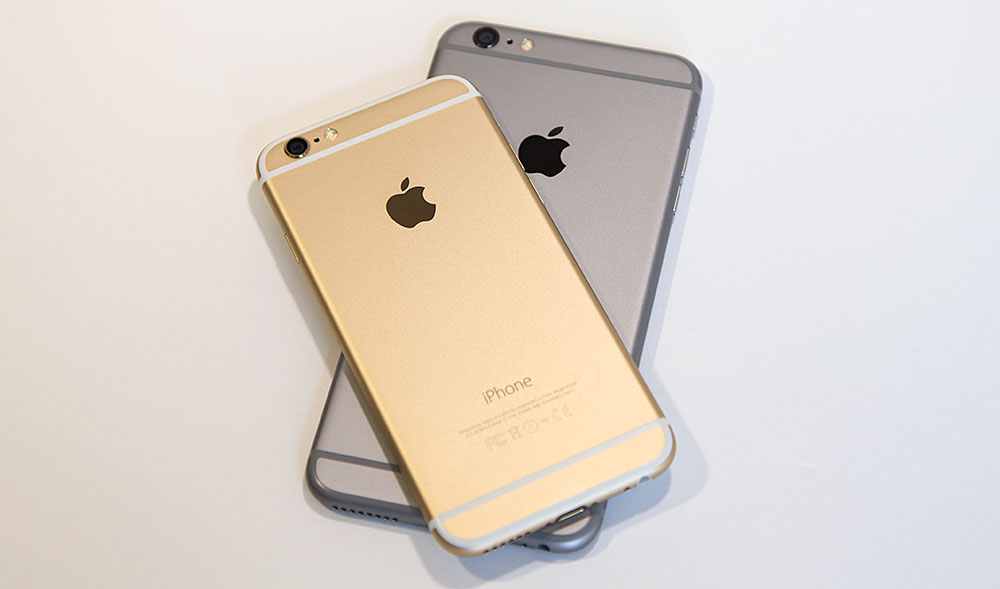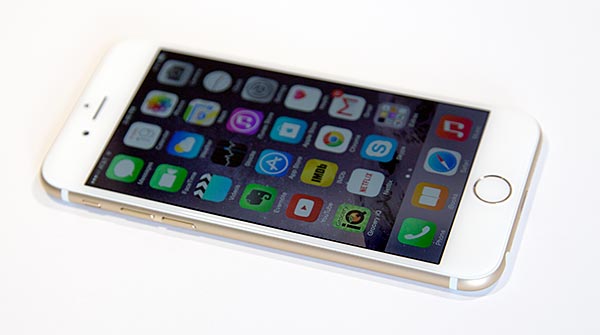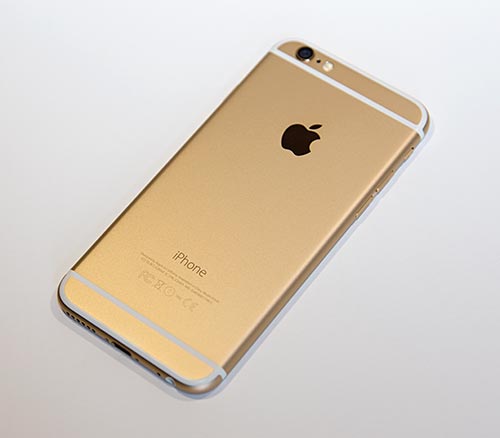Apple Iphone 6 Review
14:11 The iPhone 6 is Apple's mainstream iPhone for 2014-2015. It has a 4.7" IPS display that will seem absolutely huge if you're coming from an older iPhone, yet it will feel completely normal if you're switching from Android. This is an elegant and slim phone that might not be as distinctive looking as the iPhone 5, but in person it doesn't look like any other phone on the market. It's much too slim and flat to look like an HTC One M8, and it certainly looks nothing like a Samsung phone. The iPhone 6 runs iOS 8 on Apple's new A8 dual core 64 bit CPU with 1 gig of RAM and your choice of 16, 64 or 128 gigs of storage. It has the Touch ID fingerprint scanner introduced with the iPhone 5s, and it works as flawlessly as ever: just rest your finger briefly on the home button to unlock the phone or make iTunes purchases. Apple has updated WiFi to the 802.11ac standard and the phone has the usual Bluetooth 4.0, GPS and now NFC. NFC is for Apple Pay only, and that service launches in October 2014. You can use Apple Pay to make purchases at a long list of participating stores and it links to your credit card accounts for payment.
The iPhone 6 is Apple's mainstream iPhone for 2014-2015. It has a 4.7" IPS display that will seem absolutely huge if you're coming from an older iPhone, yet it will feel completely normal if you're switching from Android. This is an elegant and slim phone that might not be as distinctive looking as the iPhone 5, but in person it doesn't look like any other phone on the market. It's much too slim and flat to look like an HTC One M8, and it certainly looks nothing like a Samsung phone. The iPhone 6 runs iOS 8 on Apple's new A8 dual core 64 bit CPU with 1 gig of RAM and your choice of 16, 64 or 128 gigs of storage. It has the Touch ID fingerprint scanner introduced with the iPhone 5s, and it works as flawlessly as ever: just rest your finger briefly on the home button to unlock the phone or make iTunes purchases. Apple has updated WiFi to the 802.11ac standard and the phone has the usual Bluetooth 4.0, GPS and now NFC. NFC is for Apple Pay only, and that service launches in October 2014. You can use Apple Pay to make purchases at a long list of participating stores and it links to your credit card accounts for payment.
Design
The design looks better in person than it does on Apple's website where every product looks gorgeous. The phone's curves, particularly where the glass meets the metal body on the white-faced silver and gold models is high-end watch elegant. The phone is impossibly slim at 6.9mm (0.27") and the back is cleanly designed anodized aluminum. Well, almost clean: the camera lens protrudes a tiny, tiny bit--but not enough to cause significant phone wobble when laid on a desk (watch our video to see a wobble test). The antenna lines have turned everyone into a design maven: some folks dislike them; others say Apple has copied HTC. I didn't like them when I saw Apple's first photos, but I've grown to like them and find them less offensive in person. They break up the otherwise barren aluminum surface and their top and bottom outlines provide design continuity with the iPhone 5 and 5s that had separate glass areas for the antennas.
As you'd expect from Apple, there are no creaks, poorly crafted seams or rough edges on this 4.55 ounce smartphone. It may not have the iPhone 5s' Leica inspired design, but the fit and finish still bring to mind that luxury camera maker along with swanky watches. A few folks have managed to put a slight bend in the bigger iPhone 6 Plus (ours hasn't bent or warped despite carrying it in roomy pockets). The smaller iPhone 6 feels very rigid and though it looks delicate thanks to the waifish design, it requires extended or significant force to bend it (you'll find various iPhone torture videos on YouTube). That said, this is no longer a tiny phone that easily fits in any pocket and you should treat it with the same care as any larger phone when cramming it in warm, tight and flexing places like the front pocket of skinny jeans or any back pocket where you may effectively sit on it.

The iPhone has Apple's now standard Lightning port on the bottom along with the thoroughly average mono speaker. The power button is now on the right side to make it easier to reach with one hand (there's a reason most 4.7" and larger phones don't have the power button on the top edge), and the volume controls on the left side are elongated to provide adequate surface area since like the phone, they're very thin. The ringer silence slider is on the left and the 3.5mm headphone jack is on the bottom.
Display
The display is as ever one of the more captivating elements thanks not just to the curved glass edges but complete sRGB color gamut coverage, a very high contrast ratio and extreme brightness of at least 500 nits. It's simply stunning to look at. The resolution is an oddball 1334 x 750 to maintain Apple's preferred 326 PPI Retina pixel density, so it's as sharp as ever, but for eagle-eyed pixel peepers, it's not quite as sharp as the 401 PPI iPhone 6 Plus or the higher PPI full HD Android competition. I doubt the average person can see the difference in sharpness though, and that's why even Android phones at 4.7" and smaller use 720p rather than the 1080p panels found on 5" and larger phones.
Viewing angles have always been excellent on the iPhone, and Apple's Dual Domain pixels further improve viewing angles. Even at 45 degrees, the icons still look painted on. Thanks to a very low reflectance rating and thin top glass layer in conjunction with high brightness, the iPhone 6 remains one of the most legible screens outdoors in sunlight.Unlike the 5.5" 1080p iPhone 6 Plus, you don't get dual pane views in selected apps like Messages, weather and others when in landscape mode. You'll get the same landscape style view that you saw on older iPhones, only with more on screen thanks to the higher resolution. Apple has updated all the built-in apps, iLife and iWork apps for the new high resolution displays. Until third party apps update, their text might look a little fuzzy and you won't see more on screen than you do with the iPhone 5 and 5s. Happily, iOS developers are a responsive and industrious lot, and we expect to see apps updated quickly. For now, Apple has an "updated for iOS 8" section in the App Store, so you can grab updated titles that are resolution aware.
Performance and Horsepower
Apple claims up to 25% performance improvement with the A8 CPU used in the iPhone 6 and 6 Plus. They also say it throttles less, which means that the CPU and graphics chip won't drop the clock speed as markedly as the last generation A7 or some competing phone processors. Indeed, it doesn't throttle down as far as the iPhone 5s or our Galaxy S5, but it does throttle some--and that's necessary with smartphones because they're passively cooled and would overheat without thermal throttling. What does his mean to you? 3D game frame rates won't drop noticeably after you've been playing for 20 minutes. Does it get warm on the back when playing a 3D game for 20 minutes or streaming HD video? Yes, but not burning hot.
The A8 is clocked at 1.4GHz, same as the iPhone 6 Plus, and it's a dual core, 64 bit CPU. 64 bit CPUs can address more than 4 gigs of memory, but that's irrelevant right now since 1 to 3 gigs is all that you'll get in a smartphone. It does improve speeds, but only if an app is compiled as a 64 bit app. Apple's native apps are 64 bit, but most third party apps are still 32 bit. What's more interesting is that the A8 is smaller and built on a 20nm process, so it's even cooler and less power hungry. That means that Apple boosted the iPhone 6 battery capacity to power the larger display--it's not needed for the CPU.
The GPU is likely a quad core PowerVR chip, and 3D benchmarks show the iPhone 6 as doing quite well both in terms of competing against the iPhone 5s and current Android flagships running the Snapdragon 801 with Adreno 330 graphics. The A8 likewise does well in single core benchmark tests where it surpasses the 801. Even multi-core test results are impressive and match the quad core Snapdragon 801. Experientially, one rarely hears someone complaining about lagging iPhones, and the iPhone 6 is as ever very responsive and stable. Apple's control over both hardware and software helps with speed and stability, and apps from the store generally behave well.
Apple sticks with 1 gig of DDR3 low power RAM, though some wish for more to reduce Safari page reloads when switching tabs and other small telltale signs that iOS' memory management is reclaiming RAM frequently. In truth, the OS does a very good job of memory management, and we've not run into any problems related to RAM. Given how cheap and tiny RAM is, we have to assume that Apple didn't feel more RAM would make much of a difference in performance. Apple tends to avoid specs upgrades purely for marketing purposes. Storage has changed a bit, with the base model staying at 16 gigs, while the middle model now has 64 gigs and the top model has 128 gigs. We're happy to see the increased storage, especially in a phone with no microSD card slot.
Cameras
Apple continues to impress us with their rear cameras. Despite a not particularly high megapixel rating or many software features, the iPhone 6 takes excellent photos and 1080p video. Like the iPhone 5s, the iPhone 6 has an 8 megapixel camera with BSI and HDR mode. But it's not the same camera module: Apple uses larger pixel sensors (1.5 microns) to gather more light, not unlike the HTC One M8. Though megapixels aren't everything, we're happy Apple didn't go with the paltry 4MP used on the M8--that's just too low for my purposes. Yes, there are higher megapixel phones like the Samsung Galaxy S5, LG G3 and much higher megapixel cameras on high end Nokia Lumia phones. Yes I'm a photo nut (hint, I also review cameras), and 8MP is adequate for my phone as long as the images and video are high quality. That means low noise, no watercolor effect from excessive noise reduction and enough image data to crop a photo and still have something usable for more than my Facebook page. Apple leaves me impressed that such a simple user experience and mediocre (by today's standards) resolution yields some of the best photos and video I've taken with a camera phone.
Images are colorful and natural looking with good exposure, even in high contrast outdoor settings. The f/2.2 lens is fast and lets plenty of light in, and the ever so slightly protruding lens cover is sapphire crystal to significantly reduce scratches. The iPhone 6 has digital image stabilization while the bigger iPhone 6 Plus has optical image stabilization. That means you'll need a slightly steadier hand with the iPhone 6 and the camera will user smaller apertures and higher ISOs to ensure a sharp image. What does that mean in layman's terms? You'll get a tad brighter and sharper images with OIS, but that said, the iPhone 6 in use takes plenty good photos. We could see some difference in nightclub and dark street shots, with the iPhone 6 Plus having the advantage.
The camera can shoot slow motion video up to 240 fps (really slow!), fast motion video, 60 fps 1080p video and it can shoot panoramas in still mode. There are a handful of effects/filters and you can control the two-tone flash, HDR (auto is on by default and it will take two photos if needed, one HDR and the other not) and switch between front and rear cameras. The front 1.2MP Facetime camera is adequate but not as remarkably sharp as 5MP front shooters like the HTC One M8.
How does it compare to the Samsung Galaxy S5 and LG G3, two top Android camera phones? Both the LG and Samsung deliver even more detail given their higher resolutions, but the iPhone 6 delivers enough sharp detail that this likely won't matter to most folks unless you're cropping down to a very small section of the image or printing 8 x 10 photos. The LG G3 does well at night (much better than the GS5) and it's one of my favorite cameras, though it tends to unnecessarily smooth detail in processing, leading to occasional watercolor effects we don't see in the iPhone unless using digital zoom. The 20MP Nokias like the Lumia 1520 and Icon resolve noticeably more detail when zoomed in to 100% and can even shoot in RAW mode, though they can be slower to capture photos and a little less consistent in exposure than the iPhone 6 and 6 Plus.
Battery
The iPhone 6 has an 1810 mAh Lithium Ion battery that's sealed inside (Apple's service personnel can replace the battery if needed). That's a marked increase from the iPhone 5s' 1560 mAh battery, and the iPhone 6 needs the added juice to power the larger display. The net result is battery life that's similar to the iPhone 5s. If you use the phone for 30 minutes of calls, music playback with the screen off, watching a few streaming videos, checking email and social networks, it will easily last you until bedtime. If you're an avid 3D gamer, use the GPS for an hour or more or use the Mobile Hotspot feature, expect shorter runtimes.
Apple makes typically modest battery life claims, and they state the iPhone 6 should last for 11 hours of web browsing over WiFi. This is actual use time, though not many of us spend 11 hours straight browsing the web. And yes, LTE 4G generally consumes more battery than WiFi. The Samsung Galaxy S5 with its much larger 2,800 mAh battery outlasted the iPhone 6 in our mixed use tests, for those who choose their phones by battery power more than preferred OS. But for those who love iOS and need long battery life, Apple has you covered with the iPhone 6 Plus' 2915 mAh battery, which is one of the longest lived big smartphones on the market.


0 comments